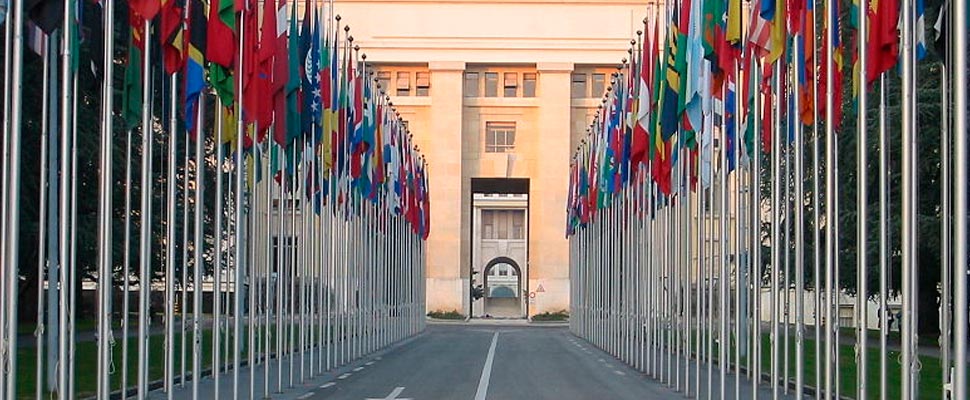Latam: a bleak outlook for accomplish the UN’s 2030 goals
With more than 100 million cases of COVID-19 infection worldwide, it is necessary to analyze whether the progress goals established by the UN for 2030 can be accomplished.

It is necessary to evaluate the objectives proposed by the UN for 2030. / Photo: © Yann Forget / Wikimedia Commons
LatinAmerican Post | Belisario Chacón
Listen to this article
Leer en español: Latam: un panorama poco alentador para el cumplimiento de los objetivos del 2030 de la ONU
In November 2020, ECLAC presented a report with proposals for the 33 LAC countries called: "Building a new future: a transformative recovery with equality and sustainability" with the idea of advancing in a viable development model that goes to the par with the goals of the 2030 Agenda.
However, the figures are not very encouraging for the region, according to the executive secretary of ECLAC, Alicia Bárcenas, it is estimated that in 2020 there was a drop in economic activity of -9.1%, a contraction of regional trade in 14% and the intraregional in 11%. Latin America is preparing for 2021 with a level of poverty that can reach 231 million people, which represents 37.3% of the total population, with unemployment that can reach 47 million people, and an informality around 54%.
In view of this not very optimistic scenario, and the economic and social crisis caused by the pandemic, ECLAC has included 7 proposals to cope with this emergency situation, among which the extension of terms and grace periods in loans of SMEs and the protection of the labor relationship, an expansive fiscal policy to be able to cover expenses for a longer period of time, create plans to recover and maintain employment-generating sectors with a vision of environmental sustainability, and achieve true political agreements.
#Economía Las inversiones exteriores se contrajeron hasta los US$859.000 millones. Latinoamérica fue la región en desarrollo más golpeada por la crisis sanitaria en esta materia.https://t.co/vuu3EBP1ur
— elespectador (@elespectador) January 25, 2021
As the executive representative of ECLAC emphasized: "We want another future and in it equality is a key factor for growth […] it is possible to eliminate poverty by 2030 and reduce inequality by increasing employment and reducing the environmental footprint." But she indicates that to achieve this, countries should grow at a rate of 4% a year and achieve a sincere redistribution of income.
You may also be interested: How will the increased printing of dollars affect Latin America?
The question is: can Latin American countries grow at this rate when the same organization has emphasized that there is a slowdown in the trade as a result of the health crisis? According to World Bank estimates, the outlook for Central America alone indicates that, for example, during 2020 it is estimated that there was a drop in GDP for Honduras of -9.7%, Costa Rica -4.8%, Guatemala -3.5 %, Nicaragua -6.0% and Panama -8.1%, estimating a recovery for mid-2022, with Honduras being the most likely economy to reach 3.9%.
In a document published by the World Bank called: "Poverty and shared prosperity 2020, a change of luck", the agency makes a study on the increase in poverty worldwide and the effect that COVID-19 has had as a consequence of the economic deterioration and the loss of thousands of jobs and business closures.
In addition, it is indicated that there is already evidence that the pandemic has deepened income inequality, and is driving people from urban sectors to poverty, and not only those who live from agriculture and livestock as was the trend before the health crisis , which threatens an economic recovery that includes everyone equally and threatens a future of growth and development.
The consequence of COVID-19 is a global recession that is reversing the positive results that had been achieved in a quarter of a century to reduce economic inequality, which together with armed conflicts and the effect of climate change could lead to around 132 million people to poverty by 2030, compromising the objective of reducing this situation of vulnerability to 3% as expected.
Los Objetivos de Desarrollo Sostenible (ODS) son 17 retos para erradicar la pobreza y garantizar que las personas del mundo gocen de paz y prosperidad. Una iniciativa de la @ONU_es a través del @pnud de 2016.
Imagen de @IdeasImprscndbl
Abro hilo 1/8 pic.twitter.com/dATQEVwXqe
— Juan Luis Castro C. (@JuanLuisCasCo) September 29, 2020
Similarly, the World Bank recently published an article called: "A moderate recovery with damages to repair", where it exposes the idea that the world economy could recover by 2021, but this would be moderately, and if not Measures are taken to stop the pandemic, a very low recovery of just 1.6% would be appreciated , in addition to the financial tensions that will be present in all markets.
This, of course, has a strong impact on LAC, where the economic burden will become very heavy, if the adequate provisions are not taken, generating an invaluable loss of human capital necessary for sustainable growth.




